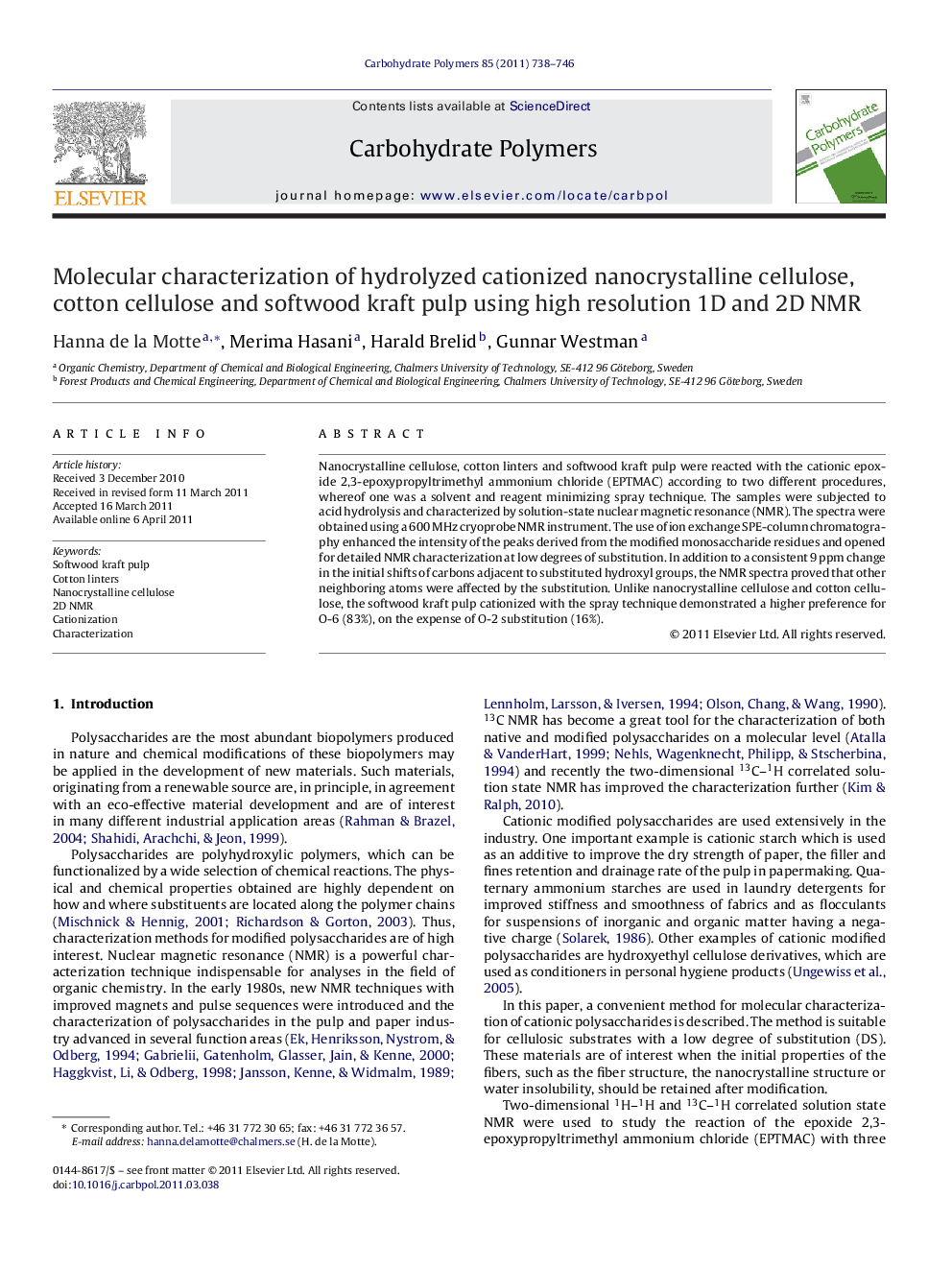| Article ID | Journal | Published Year | Pages | File Type |
|---|---|---|---|---|
| 10602574 | Carbohydrate Polymers | 2011 | 9 Pages |
Abstract
Nanocrystalline cellulose, cotton linters and softwood kraft pulp were reacted with the cationic epoxide 2,3-epoxypropyltrimethyl ammonium chloride (EPTMAC) according to two different procedures, whereof one was a solvent and reagent minimizing spray technique. The samples were subjected to acid hydrolysis and characterized by solution-state nuclear magnetic resonance (NMR). The spectra were obtained using a 600Â MHz cryoprobe NMR instrument. The use of ion exchange SPE-column chromatography enhanced the intensity of the peaks derived from the modified monosaccharide residues and opened for detailed NMR characterization at low degrees of substitution. In addition to a consistent 9Â ppm change in the initial shifts of carbons adjacent to substituted hydroxyl groups, the NMR spectra proved that other neighboring atoms were affected by the substitution. Unlike nanocrystalline cellulose and cotton cellulose, the softwood kraft pulp cationized with the spray technique demonstrated a higher preference for O-6 (83%), on the expense of O-2 substitution (16%).
Keywords
Related Topics
Physical Sciences and Engineering
Chemistry
Organic Chemistry
Authors
Hanna de la Motte, Merima Hasani, Harald Brelid, Gunnar Westman,
